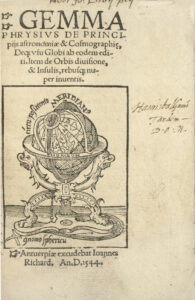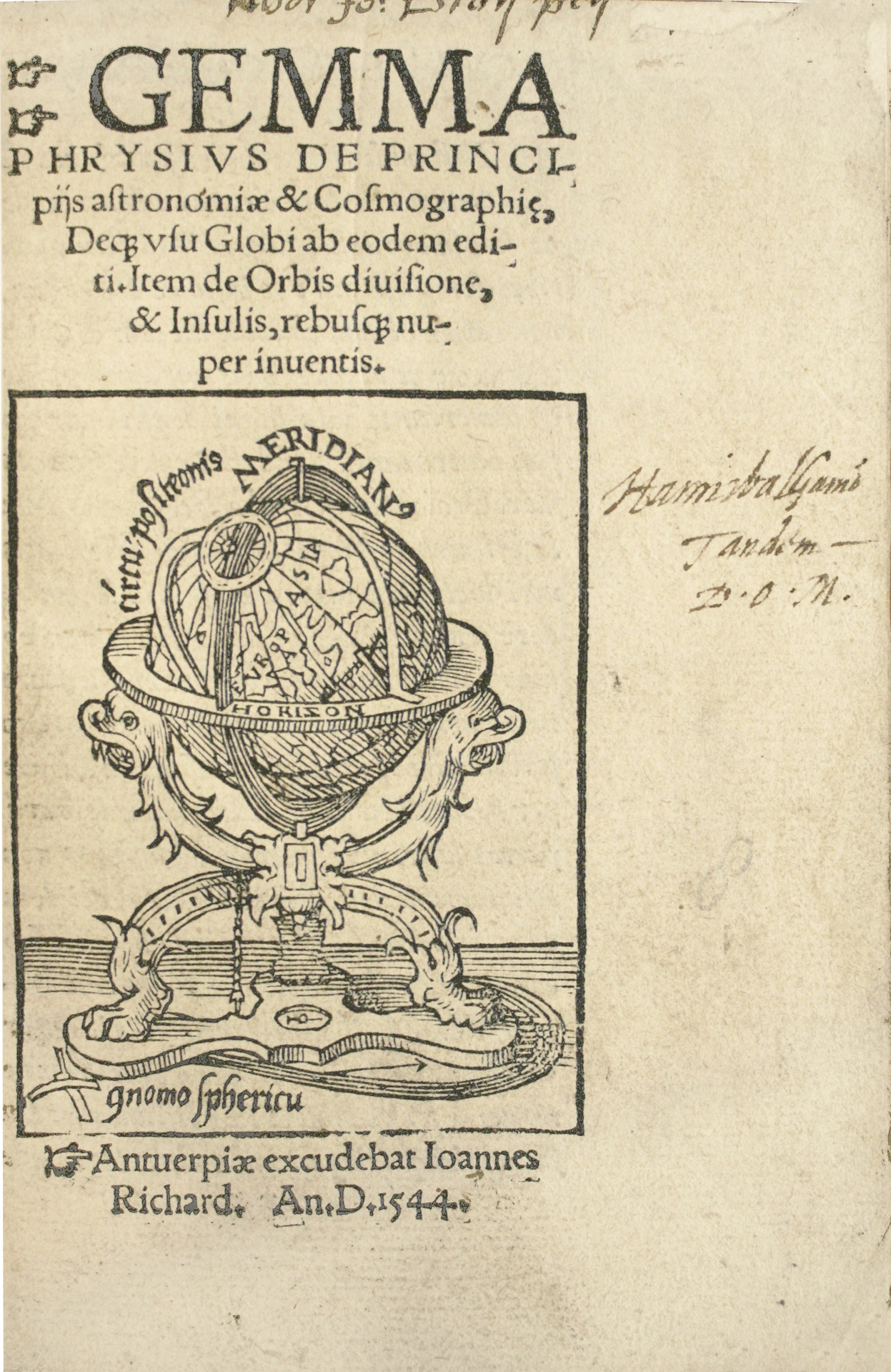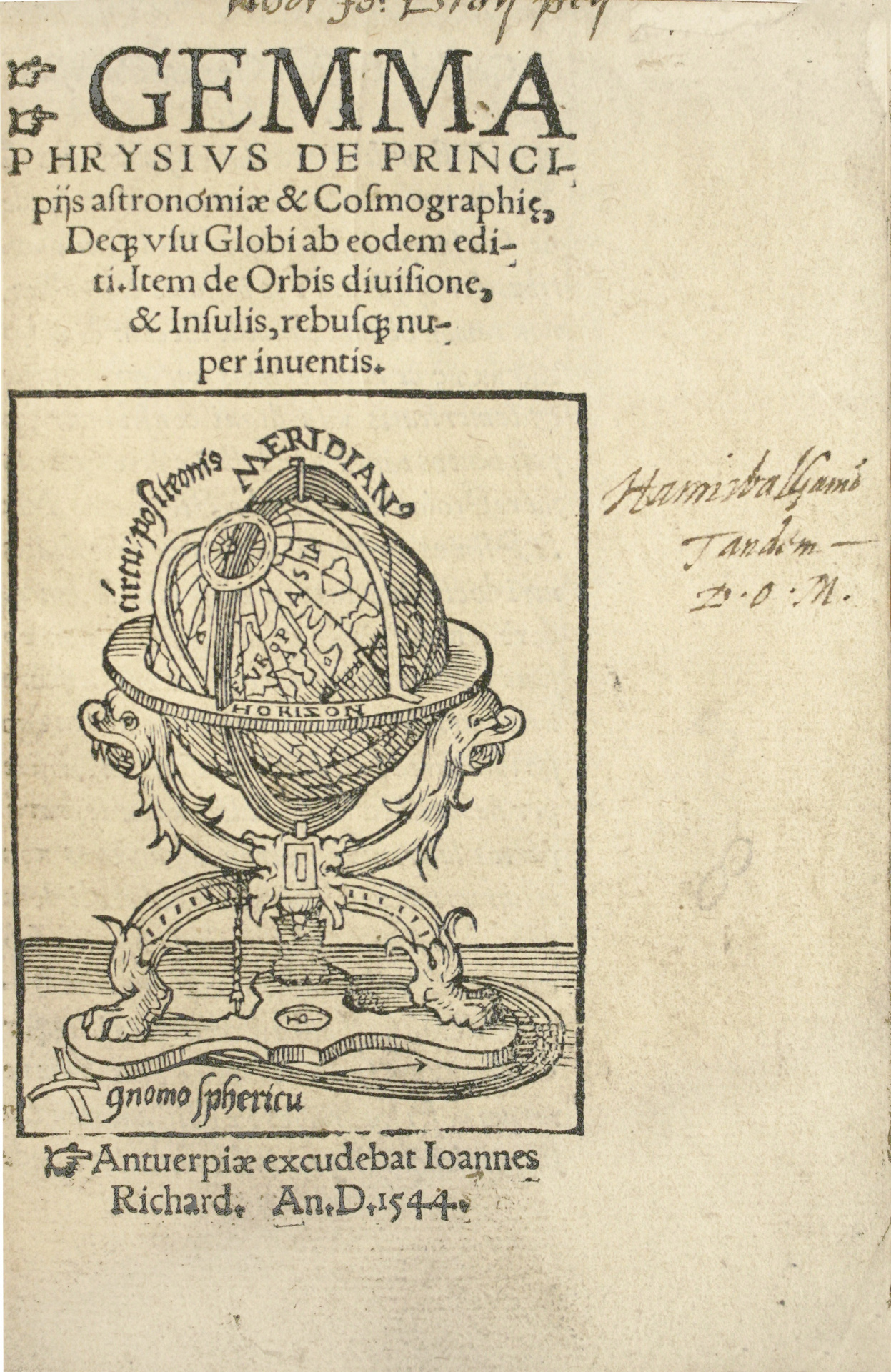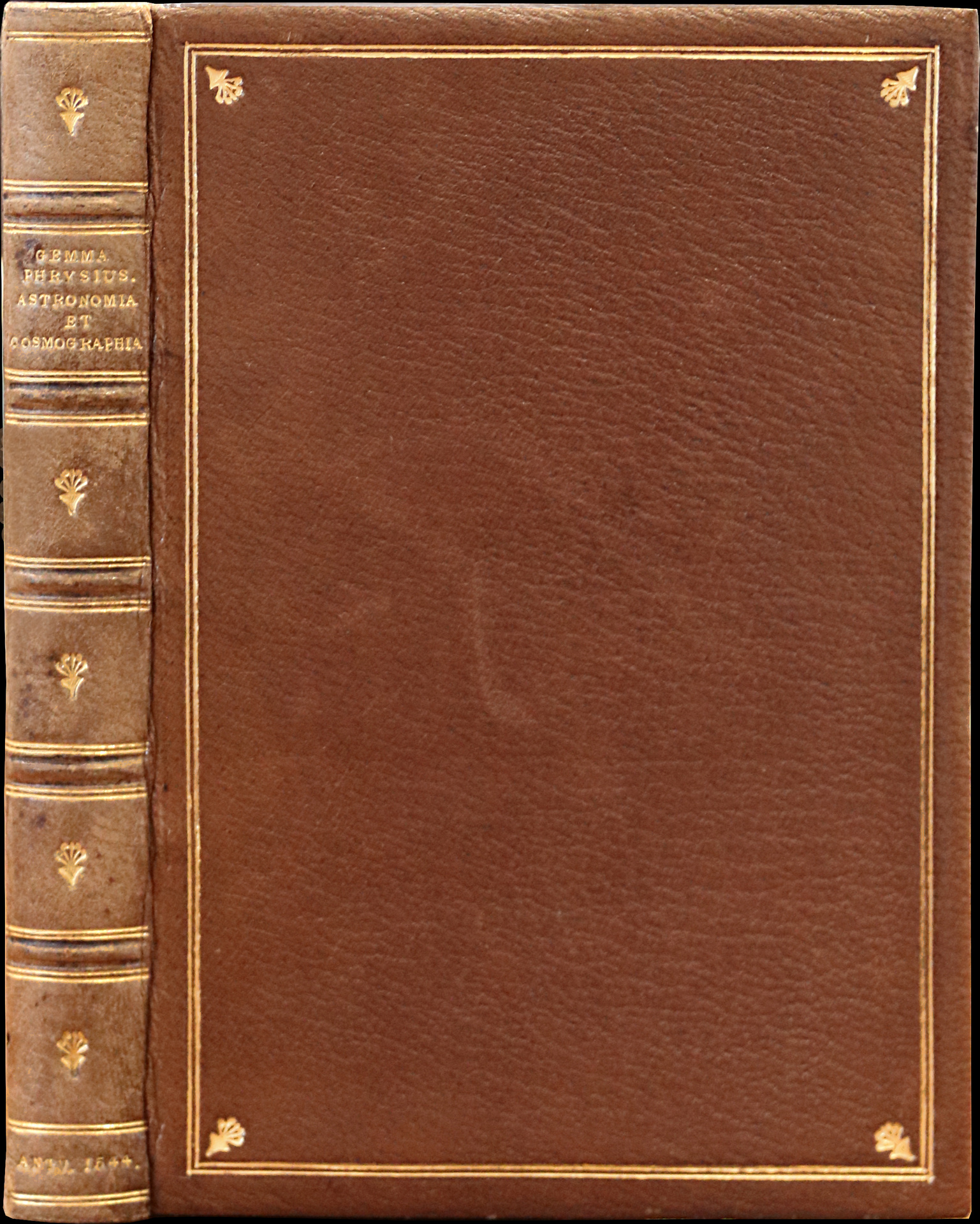16mo [138 x 95 mm] of (92) ll. Tiny restoration at the upper right corner of the title. Light-brown morocco, two gilt fillets around the covers with gilt fleurons at the corners, spine ribbed and decorated with gilt fleurons and gilt fillets, gilt inner border, top edge gilt, untrimmed edges. 19th century binding.
Second enlarged edition, of the utmost rarity, of this important work of cosmography by Gemma Frisius, the founder of scientific cartography in the Netherlands and Mercator’s teacher.
The present edition contains all the information relative to America: chapters 30 and 31 deal with America and American islands.
Sabin 26855.
“Chapter XXX is about Americo Vespucius, Brazil, cannibals, Darien, and Florida;
chapter XXXI is on the American islands; Guiana, Cuba, Yucatan, Cozumella, and Jamaica”.
“Chap XXIX, De insulis nuper inventis ; chap. XXX, De America ; chap. XXXI, De Insulis apud Americam » (Sabin, 62588, about the Parisian edition, 1548).
The work ends with a table of cities with their longitudes and latitudes.
The first edition was published in 1530.
“It seems probable that this little book was issued to serve as explanatory text for a globe or globes Gemma Frisius had constructed or was preparing to construct. In it we have one of the earliest technical yet practical explanations of the parts and uses of the globe, and of somewhat detailed statement how such instruments may be serviceably employed in cosmographical studies. On the title-page there appears the representation of a globe resting on a base having three feet, which has been thought to be a representation of his completed work. We are told in his ‘Epistola salutatoria’, at least in an implied manner, that there were to be numerous copies of the globes, seeing that they were intended for the trade, and Roscelli’s statement would lead us to believe that they had found their way into Italy […]” (Stevenson, Terrestrial and Celestial globes, p. 102).
Gemma Frisius was named Reinerus. He was born in Docum in 1508 in an honest family. He was a Doctor profound in the theory of his art, & happy in the practice. But he was particularly excellent in mathematics. Emperor Charles V loved him and estimated him deeply, & even according to the advice of this prince, who was learned in Astronomy and Geometry, he corrected a mistake that he had made in his map of the world, that he dedicated to this Emperor. He died in Louvain in 1555 of plague. “He was the pupil of Apianus and the teacher of the celebrated cosmographer Juan de Rojas.”
Gemma Frisius (1508-1555) is a Dutch cartographer and mathematician who made his studies in Belgium. His first work is a review of Apianus’ cosmography book; it raises Jan Dantyszek’s awareness. His treatise De locorum describendorum ratione is important in the history of geodesy, because it contains the oldest report on triangulation principles and a method to determine longitudes. His scientific contributions take up a great deal of space in the field of practical cartography.
He opens a workshop dedicated to cartography and works with the engravers Van der Heyden and Bollaert or Graphius of Antwerp. Tycho Brahe and Kepler will praise the precision of the instruments made by him. Gemma Frisius is also one of the first people to popularize cosmology.
His work made him the leader of the Dutch geographical school, whose pupil Gerardus Mercator has been the most brilliant representative. Three others of his pupils will become famous: André Vésale in anatomy, Rembert Dodoens in botanic and Johannes Stadius in astronomy.
The lunar crater Gemma Frisius was named in his honour.
His work Gemma phrysius de principiis astronomiae & cosmographiae was translated into several languages and reprinted numerous times.
He made two significant contributions to the earth sciences. In a chapter added to the 1533 Antwerp edition of the Cosmographicus, he was the first to propose the principle of triangulation as a means of carefully locating places and accurately mapping areas. 20 years later, in the 1553 Antwerp edition of De princinpiis astronomiae, he was the first to suggest in explicit terms the use of portable timepieces to measure longitude by lapsed time.
Kish credits Gemma as the first to suggest the use of an accurate timekeeping instrument as a solution to the problem of longitude, and as among the first to propose triangulation for surveying and mapmaking. Gemma Frisius did a world map with lines of latitude and longitude in 1540.
The edition is illustrated with a woodcut showing a globe on the title and an armillary sphere on l. A6v.
Precious copy of this rare work of astronomy and cosmography.
We could only trace a single copy of this rare edition on the public market over the last forty years.




